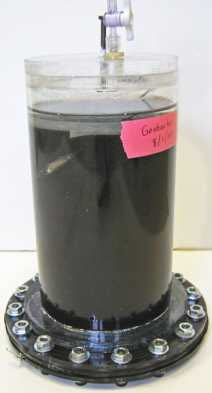A team of students at Massachusetts Institute of Technology (MIT) have developed a novel fuel source. Bacteria feed on plant waste in an enclosed cylinder, providing enough electricity to power cell phones and other small devices. Could this be an infinite power supply in the future?
The team's goal was to address the many millions of people worldwide who live off the electrical grid. Currently, many who live that way resort to technologies like solar power and car batteries for their power needs. This new solution, developed by students, would provide a tank of goo with electrodes coming off which provide power.
It's called a Microbial Fuel Cell (MFC) and is essentially a Plexiglas container filled with degrading plant matter, such as old grass, flowers, leaves, etc., in a liquid solution. Bacteria on the inside consume sugar, starch and whatever other organic materials they can find, and produce electricity in the process. Currently the team is seeking a patent for their technology as it does not use platinum like other, similar designs. In fact, the team says the entire apparatus could be constructed for $2.
The idea is not so far fetched as it might seem. Sony introduced a prototype battery in August, 2007 which consumed the sugars in processed grape juice. It was enough to power an MP3 player and a small, DC fan. The Sony device used a series of small plastic cubes, each about the size of a large ice cube. The juice was injected into the system where it began giving off enough power to run the device and external speakers.
The team's current implementation and catalyst solution produce a very small amount of electricity. In fact, it would take about six months to recharge a cell phone battery, they said. However, they also believe the catalyst can be refined to produce a 100x fold increase, resulting in only a day or so to recharge a cell phone from a single device. And, at only about $2 for each single unit, it would be easy to construct 50 or more of them to power many more devices in real-time, 24/7. They'd just have to be kept filled with grass clippings, leaves and other such materials. And, for most of the rural areas the team is targeting, that resource is in abundance.

